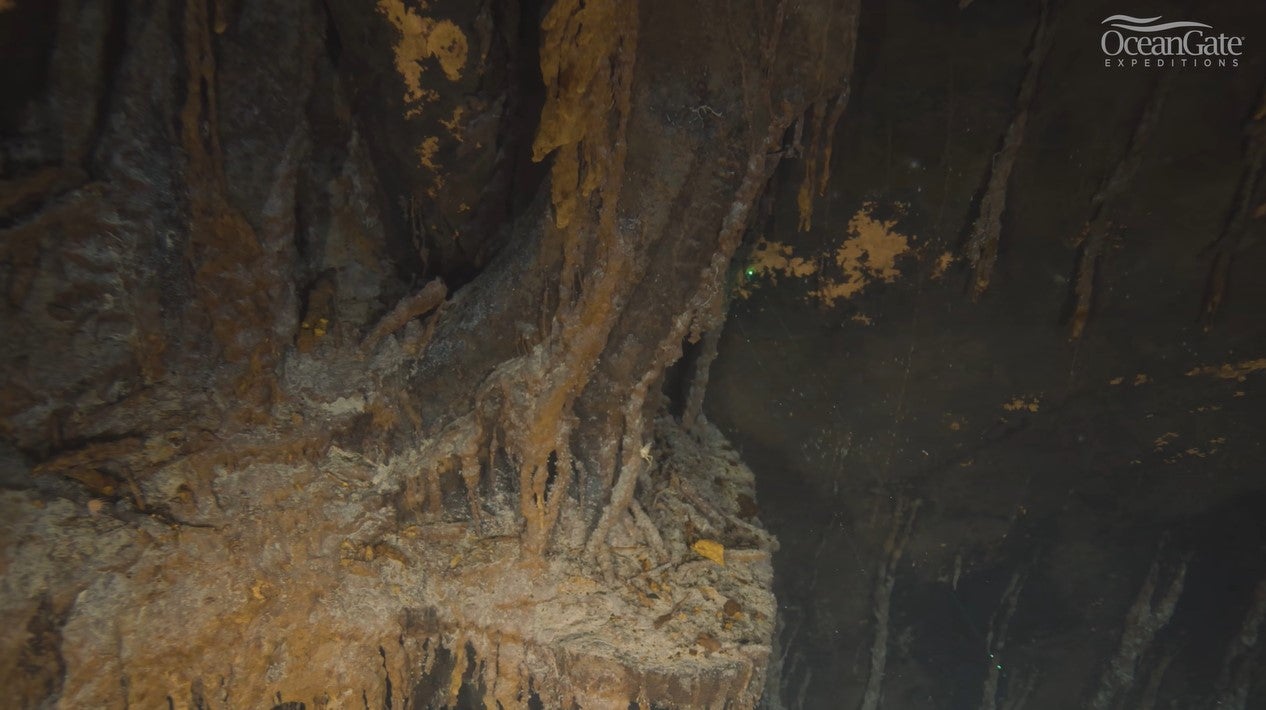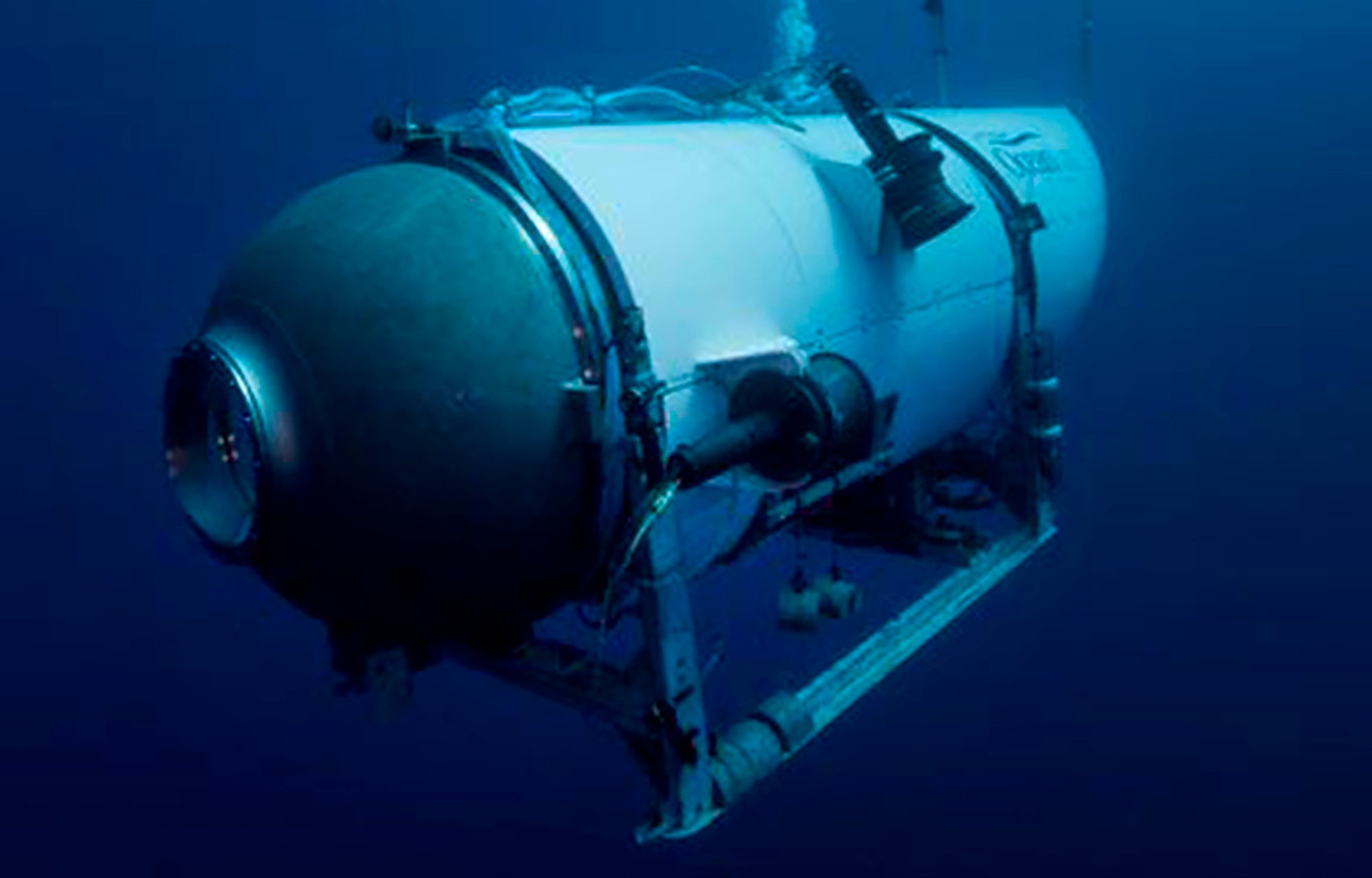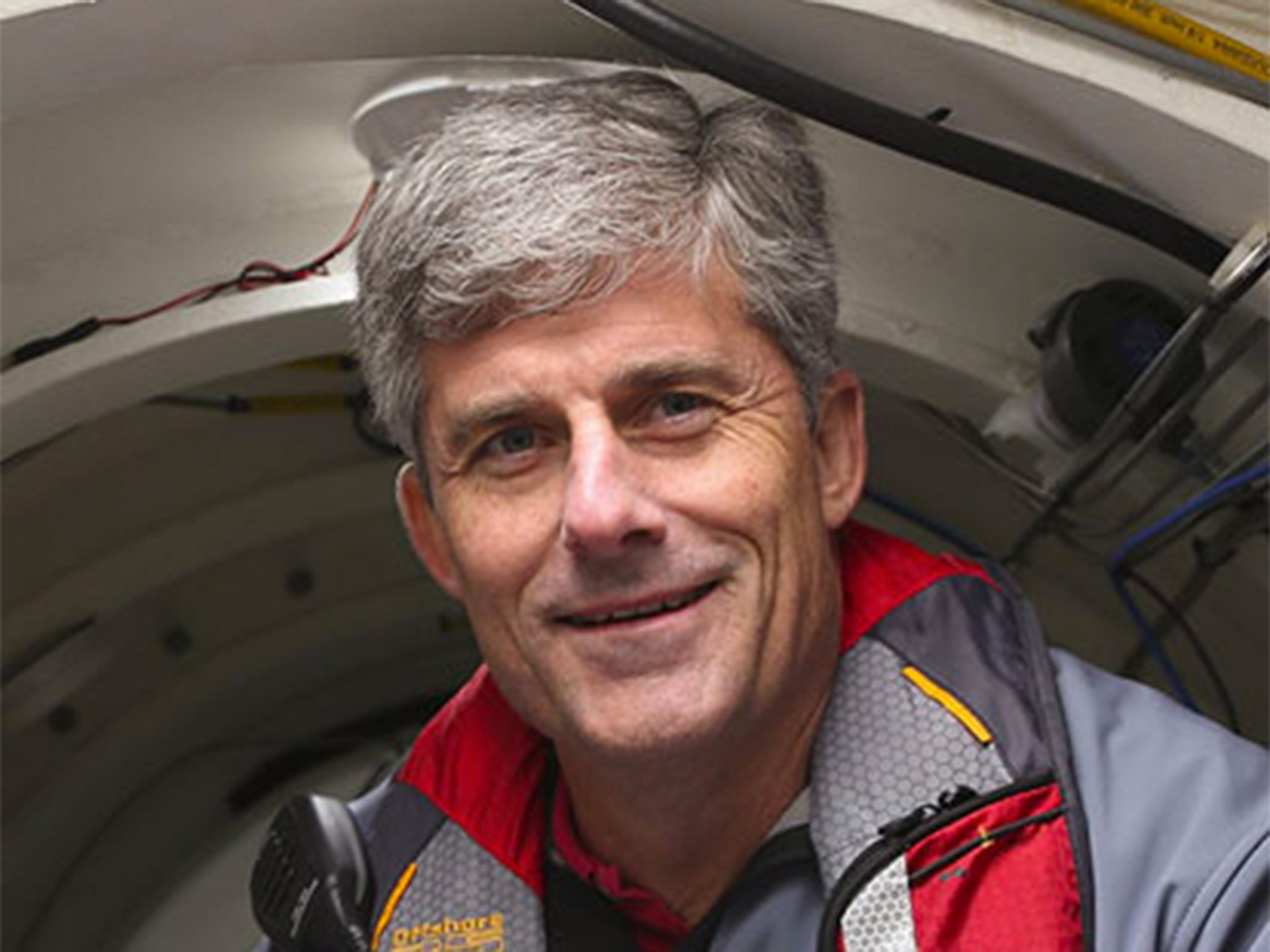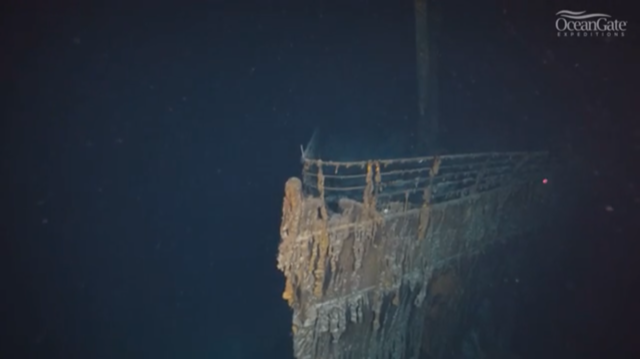One year ago OceanGate’s Titan sub imploded, taking 5 lives and dreams of deep-sea exploration with it
Last June, the eyes of the world were upon the same North Atlantic waters where the Titanic and its passengers sank to icy fates - as international rescue teams searched for a submersible carrying five explorers venturing to the shipwreck. The disastrous implosion of Titan and the reckless path that led to it, however, continues to tell cautionary tales, writes Sheila Flynn

The images were almost hauntingly romantic — underwater windows to one of history’s most famous shipwrecks, captured more than a century after RMS Titanic and the 1,517 souls aboard sank tragically to a deep-sea North Atlantic grave.
The new 2022 pictures were the highest resolution ever taken of the doomed ship; its sinking 110 years earlier had quickly become a global fascination that has endured for generations. The ship’s victims were among the richest and poorest on the planet at the time, the circumstances of their deaths among the most terrifying imaginable.
OceanGate Expeditions, the Washington-based companyresponsible for the photos, had shrewdly tapped into that public obsession. Founded in 2009 to make “deep-sea exploration possible for commercial, scientific, and exploration travel expeditions,” the company recorded the 8,000 pixels footage on a submersible dive and then publicly released them. They promptly and unsurprisingly went viral.

OceanGate was sleek and media savvy, helmed by a swashbuckling CEO who’d once aspired to be an astronaut. Stockton Rush was excellent at promotion and pushing boundaries, and the enterprise simultaneously mixed science with tourism, zeroing in on the Titanic wreck as the ultimate exploration destination. The company pumped out press releases and held “scientific research media briefings” about its efforts to chronicle the wreck’s decay and its surrounding ecosystem – while dangling trips for civilians who could cough up six figures for a place as “mission specialists” on OceanGate’s submersible, Titan.
And when the submersible — carrying Rush and four others on a Titanic tour — ceased communications less than two hours into its June 18, 2023 dive, the world tuned in.
After four days of frantic searching by international authorities, recovered debris confirmed a second tragedy near the Titanic’s gravesite. Titan had suffered a “catastrophic explosion” around the time communications ceased – and mercifully, it likely occurred with no warning to those aboard.

Declared dead were British-Pakistani businessman Shahzada Dawood, 48, and his son, Suleman, 19; British adventurer Hamish Harding, 58; French deep sea explorer Paul-Henri Nargeolet, 77, who’d been on Titan’s maiden voyage in July 2021; and Rush, 61, who was piloting the submersible.
In another wry Titanic twist, the great-great grandparents of Rush’s widow had been among the 1912 sinking’s most famous victims: retail magnate Isidor Straus and his wife, Ida. According to Titanic legend, the elderly pair were pictured standing arm in arm on the deck of the ship as it went down, devoted until the very end.
Rush exhibited a similar adoration – albeit a reckless one – to deep-sea exploration and innovation, and his push-through-at-all-costs philosophy at OceanGate has come under fierce scrutiny since the Titan implosion. But the tragic loss of life has also shone a spotlight on the high-risk high-reward nature of exploration – and the attitudes of those who undertake it.
Rush, himself, had seemed cavalier about the dangers from the outset.

“I mean, if you want to be safe, don’t get out of bed,” he told CBS News Sunday Morning in 2022, the year after Titan’s first Titanic visit. “Don’t get in your car. Don’t do anything. At some point, you’re going to take some risk, and it really is a risk-reward question. I think I can do this just as safely by breaking the rules.”
Princeton-educated Rush, descended from Declaration of Independence signatories and oil and shipping magnates, founded OceanGate in 2009 with Guillermo Söhnlein, who left the company in 2013 but retained a minority share.
“If you were a researcher and had to explore the ocean, you had to get into one of the government’s subs,” Söhnlein told Rolling Stone last year, regarding the hurdles explorers faced at the time of OceanGate’s founding.
“Your only other option was to pay to build one … We wanted to show the world it was possible to go down to 4,000 meters. I believe Stockton realized the best way to do that was to prove it ourselves.”

Rush threw himself headlong into the effort, spearheading OceanGate efforts that eventually led to a model called Cyclops, followed by Cyclops 2, renamed Titan. Made from “aerospace-grade carbon fiber and titanium,” the company boasted, it was named after the watery moon of Saturn. OceanGate touted Titan as the world’s only privately-owned, 5-crew member submersible capable of reaching Titanic depths.
Rush and Nargeolet were among the five on the maiden July 2021 dive, the CEO proclaiming success at the time after OceanGate “had to overcome tremendous engineering, operational, business and finally Covid-19 challenges to get here.”
The high-res images from that expedition gave OceanGate newfound recognition and media attention. Rush bragged a few months later, as he announced plans for a 2022 trip, that civilians aboard the inaugural voyage “helped our crew gather and review terabytes of the highest resolution still images and video of Titanic and the debris field ever collected” – referring to the “digital preservation initiative.”
Behind the buzz though, was an apparent house of cards at OceanGate as Rush forged ahead and reportedly cut corners. Former employees have alleged the CEO ignored warnings, fired those who raised concerns and “outright lied” about Titan’s safety, according to a Wired investigation published this week.
Rush, however, was “committed” and “a great salesman” who “fully” believed “so much in his own creation and innovation that he wasn’t willing to even consider that he might be wrong about something,” camera operator Brian Weed, who took a scary test dive on Titan in the months before its inaugural Titanic journey, later told Insider.

Detailing constant communication, mechanical and logistical problems on the aborted dive, Weed told Insider that Rush “was blinded by his own hubris, for lack of better word — blinded by his own confidence.”
That confidence, however, was winning over other intrepid explorers and Titanic enthusiasts hoping to realize life-long dreams – and willing to pay through the nose for it, handing over $150,000 for the privilege of being a “mission specialist.”
Chicago filmmaker David Waud, who was aboard Titan’s fifth exploration in summer 2021, told The Independent last year he’d signed up for the trip “quite a few years ago when it was a little bit less.”
Rush, he’d reasoned, “wouldn’t have been down there piloting it almost every single trip, every single dive, if he hadn’t had 100 per cent confidence that submersible was okay.”
Renata Rojashad dreamed of visiting the wreck since the age of 12, saved for decades and worked every contact she had before boarding Titan in 2022 to become the first ever Mexican woman to visit Titanic, she told The Independent that September.
She recalled hurtling towards the ocean floor and being too busy helping on the five-person submersible to become overwhelmed with emotion as she realized her life’s ambition.
Until she could actually see the ship materializing before her, Rojas later told The Independent – prophetically – ““I didn’t want to get all my hopes up, because anything can happen until you get to the bottom.”

That reality would hit hard nine months later, after the Titan began its doomed final descent carrying Rush, Nargeolet, Harding and the father-son Dawood duo. The submersible stopped communicating with the ship about an hour and 45 minutes into the dive; OceanGate waited about eight hours to alert authorities.
Once that happened, however, the eyes of the world were on a possible race against time. Experts calculated that around 96 hours of oxygen remained; round-the-clock coverage followed as an international rescue effort launched ships, planes and equipment to search an area twice the size of Connecticut in waters two and a half miles deep.
Reports dissected possible banging heard underwater as experts and talking heads across the globe queried whether those aboard from Sunday’s dive could be frantically signaling their adrift location.
All hope evaporated by Thursday as the allotted oxygen hours crept to a close. That same day, the Coast Guard announced debris had been found roughly 1,600 feet from the Titanic. It was also revealed that the US Navy, in analyzing acoustic data from around the time Titan ceased communicating, found an anomaly “consistent with an implosion or explosion in the general vicinity” of where the submersible was operating, an official told AP.
It was a tragic end to yet another ill-fated voyage in the North Atlantic waters.

The president of the Explorers Club, which counted Harding and Nargeolet among its members and where Rush had spoken, lamented the deaths in a June 22, 2023 letter, writing: “Their memories will be a blessing and will continue to inspire us in the name of science and exploration.”
Within weeks, however, OceanGate’s significant online presence had nearly vanished, and its office closed indefinitely. The disastrous end to Titan’s story is a blow to risk-taking adventuring as the merits of the venture continue to be debated, although some smaller competitors continue to grow.
“Even the most reliable technology can fail, and therefore accidents will happen,” Nicolai Roterman, a deep-sea ecologist and lecturer in marine biology at the University of Portsmouth, England, told AP last year.
“With the growth in deep-sea tourism, we must expect more incidents like this.”
But the Titan disaster also made those who were willing to sign up think twice. Filmmaker Waud said he had felt “so safe” while journeying to Titanic to 2021 – but conceded last summer that he and his family “now know that it was a lot more dangerous than I thought it was and that I made it out to be.”
Join our commenting forum
Join thought-provoking conversations, follow other Independent readers and see their replies
Comments